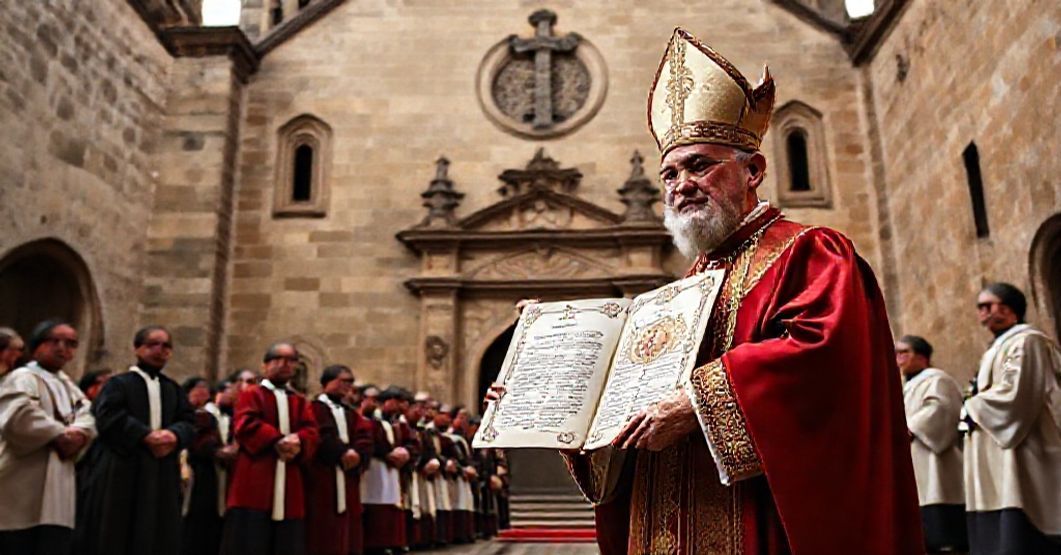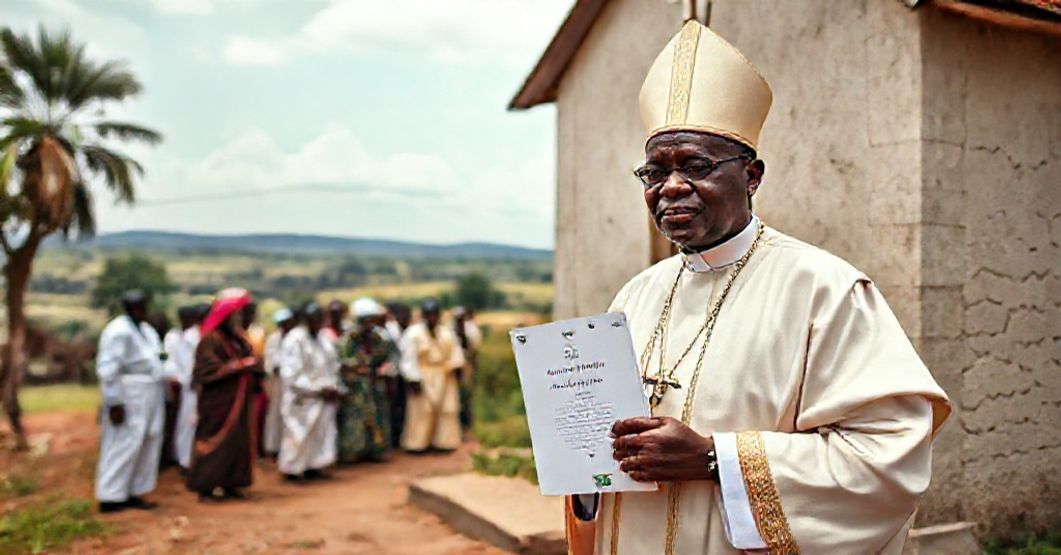Antipopes of the Antichurch



















Timeline of this heretical pontiff
Encyclical Letters
+ 15 posts1959
+ 7 posts1961
+ 4 posts1962
+ 2 posts1963
+ 2 postsApostolic Exhortations
+ 3 postsApostolic Constitutions
+ 93 posts1958
+ 6 posts1959
+ 87 postsMotu Proprio
+ 15 posts1958
+ 1 posts1959
+ 1 posts1962
+ 11 postsApostolic Letters
+ 151 posts1958
+ 4 posts1959
+ 63 posts1960
+ 78 posts1961
+ 1 posts1962
+ 4 posts1963
+ 1 postsSpeeches
+ 99 posts1958
+ 2 posts1959
+ 26 posts1960
+ 29 posts1961
+ 16 posts1962
+ 24 postsMessages
+ 6 posts1959
+ 4 postsHomilies
+ 4 postsLetters
+ 152 posts1958
+ 1 posts1959
+ 48 posts1960
+ 32 posts1961
+ 31 posts1962
+ 30 posts1963
+ 10 postsNot categorized
+ 1 posts1958
+ 1 postsNews feed


CALAGURITANAE ET CALCEATENSIS (1959.03.09)
Quandoquidem this brief Latin constitution of John XXIII announces two administrative acts for the diocese of Calahorra and Calceatensia in Spain: the addition of the title “Logroñensis” to the diocesan name, and the elevation of the Marian church “de la Redonda” in Logroño to the dignity of a concathedral, with corresponding canonical rights and obligations; the entire text is couched in solemn canonical formulae, invoking episcopal care for souls as the pretext for territorial and titular adjustment, while never once touching the true crisis of faith, morals, or worship engulfing the 20th century Church.


Sancti Dominici (1959.04.01)
The document attributed to John XXIII under the title “Sancti Dominici… Constitutio Apostolica” announces the erection of a new diocesan structure in the Dominican Republic: the Diocese of Nuestra Señora de la Altagracia in Higüey, carved from the territory of the Archdiocese of Santo Domingo. It lays out borders, assigns suffragan status, regulates clergy ascription, seminary formation, canonical consultors, cathedral status, economic endowment, and delegates execution to curial officials. Behind the polished canonical Latin of a routine administrative act, it attempts to clothe a looming revolution against the Church’s constitution with the language of pastoral solicitude.


Oturkpoënsis (1959.04.02)
The document issued in Latin under the name of Ioannes XXIII on 2 April 1959 declares the elevation of the Apostolic Prefecture of Oturkpo in Nigeria to the rank of a diocese, under the title Oturkpoënsis, preserving its name and boundaries. It subordinates the new structure to the metropolitan see of Onitsha, entrusts its administration to the Congregation of the Holy Spirit (Spiritans) under the patronage of the Immaculate Heart of Mary, prescribes the erection of at least an elementary seminary and a chapter or diocesan consultors, assigns sources for the episcopal mensa, and vests an apostolic delegate with executing the decree. It presents this as the fulfillment of Christ’s command “Go into the whole world and preach the Gospel to every creature” (Mk 16:15) and binds all to obedience, with canonical penalties for resistance.


KIMBERLEYENSIS ET ALIARUM (1959.04.02)
This Latin text, issued in 1959 by John XXIII under the title “CONSTITUTIO APOSTOLICA KIMBERLEYENSIS ET ALIARUM (BECHUANALANDENSIS),” rearranges ecclesiastical boundaries in Southern Africa: by detaching territories from the dioceses of Kimberley and Bulawayo and from the Apostolic Vicariate of Windhoek (entrusted respectively to Oblates of Mary Immaculate and Mariannhill missionaries), it erects a new Apostolic Prefecture of Bechuanaland, assigned to the Passionist Congregation, and vests its Ordinary with the usual canonical rights and duties; all is clothed in solemn legal formulas guaranteeing its binding force.
Varia
Announcement:
– News feed –implemented
– Antipopes separate web sites with their all documents refutation – in progress
